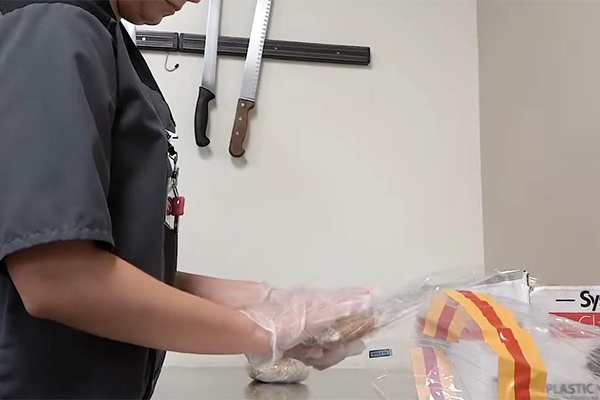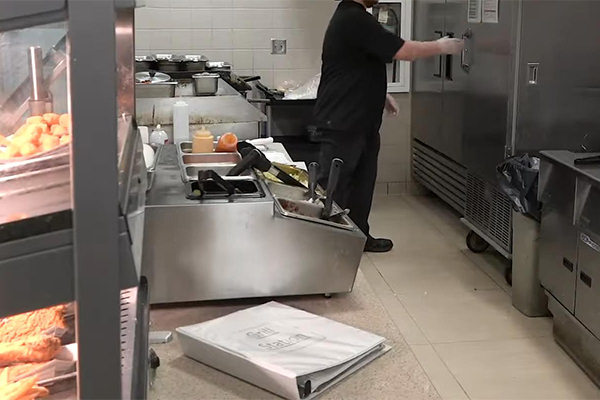Unlike typical food service businesses, what are the features of hospital catering in healthcare facilities?
Hospital Catering Service - Main Features and Trends
Hospital kitchens, hospital catering, and food service play a vital role in healthcare facilities, impacting everything from patient recovery and staff efficiency to visitor satisfaction. Unlike typical food service businesses, hospitals have a multitude of considerations when it comes to catering. Healthcare catering demands precision in nutritional science, operational flexibility, and unwavering safety — all while adapting to technological innovations and rising patient expectations. Let's delve into what defines, drives, and evolves this critical service.
What is Hospital Catering?
Hospital kitchen management runs the full meal journey from ingredient sourcing and prep to delivery systems, serving patients, staff, and visitors around the clock. The kitchen department in hospital facilities operates 24/7, balancing clinical nutrition rules with mass meal production demands. Specialized hospital catering equipment like combi ovens, blast chillers, and allergy-safe prep stations handles thousands of daily meals efficiently. Therapeutic diets address specific medical needs—think renal-friendly plates or diabetic-adjusted portions. Staff grab nutritious ready-to-eat options during marathon shifts, while visitors access comforting meals during stressful hospital visits.

The Importance of Hospital Catering
Nutrition: Fueling Recovery
Balanced nutrition remains clinically essential in healthcare catering, where proteins rebuild tissue, micronutrients boost immunity, and carbohydrates sustain energy reserves. Collaboration between kitchen teams and dietitians tailors menus to medical diagnoses—pureed textures address dysphagia, high-protein plates support post-surgical recovery, and calorie-dense portions combat oncology-related weight loss. Standardization proves ineffective: cardiac patients' strict low-sodium requirements contrast sharply with pediatric IBD nutritional protocols. Such precision directly correlates with reduced recovery durations and readmission rates across healthcare facilities.
Hygiene and Safety: Ensuring Well-being
Hospital food service equipment must comply with NSF/FDA standards, though protocols extend further. Facilities enforce HACCP through biometric access controls, ATP swab testing for hospital catering equipment, and color-coded utensils to eliminate cross-contamination. Every kitchen equipment for hospitals selection—from antimicrobial flooring to dishwasher temperature sensors—targets pathogen containment. In catering for hospital environments, single lapses risk immunocompromised patients; documented 0% foodborne illness rates result from rigorous staff certification and digital traceability systems.
Menu Options: Catering to All
Dietary diversity serves therapeutic purposes rather than convenience. Halal, kosher, vegan, and texture-modified meals constitute essential components for patient dignity and nutritional compliance, not alternatives. Leading hospital catering services cycle through 300+ monthly dishes, incorporating patient feedback to introduce culturally resonant options like congee for East Asian elders or injera for Ethiopian communities. Third-party religious audits verify compliance, with inclusivity driving consumption rate increases of 40% in peer-reviewed facility studies.
Food Service Quality: Enhancing Experience
Nutritional value diminishes through delayed delivery or temperature mishandling. Strategic meal timing aligns with clinical schedules—post-chemotherapy nausea windows, for example—using GPS-tracked heated trolleys. Staff food service kiosks achieve under 90-second fast delivery via contactless systems. Post-discharge satisfaction metrics continually refine services, evidenced by tablet-based bedside ordering implementations. True efficiency in food service within healthcare facilities prioritizes human factors over industrial output.

The Future of Hospital Catering
Hospital catering suppliers are pioneering AI-driven resource optimization, where predictive algorithms analyze admission patterns to adjust ingredient procurement—reducing waste by 18% in clinical trials. Next-generation hospital food service equipment like precision sous-vide systems and automated cook-chill lines. Turnkey kitchen solution providers like Shinelong exemplify sector transformation, offering modular steamers and ventless hoods enabling rapid infrastructure upgrades without construction downtime—a critical advantage for infection control compliance. During global health crises, agile hospital catering suppliers who master this balance of regulatory adherence and configurable design emerge as essential partners.
Proven in 200+ global hospital projects, including partnerships with Asia's leading healthcare providers, Shinelong's solutions are built on a foundation of innovation, scalability, and compliance with international safety regulations. Backed by 24/7 global support, agile R&D, and a client-centric ethos, we empower hospitals worldwide to transform their kitchens into high-performance hubs where patient care, staff productivity, and sustainability converge. Trusted by 200+ healthcare facilities, Shinelong redefines excellence in medical foodservice - because when lives depend on precision, nothing less than perfection will do.

Since Shinelong was established in Guangzhou in 2008, we have made great strides in the fields of commercial kitchen planning and kitchen equipment manufacturing.
IF YOU HAVE ANY QUESTION,PLEASE CONTACT US.
WhatsApp: +8618902337180
WeChat: +8618924185248
Telephone: +8618924185248
Fax: +86 20 34709972
Email: info@chinashinelong.com
After-Sales Contact
Telephone: +8618998818517
Email: service@chinashinelong.com
Add: No. 1 Headquarters Center, Tian An Hi-tech Ecological Park, Panyu Avenue, Guangzhou, China.


















